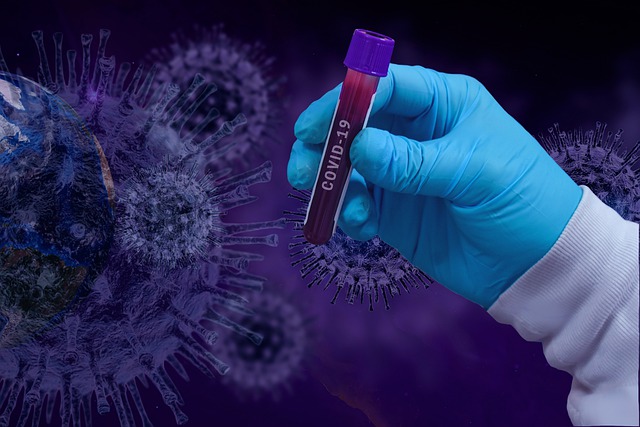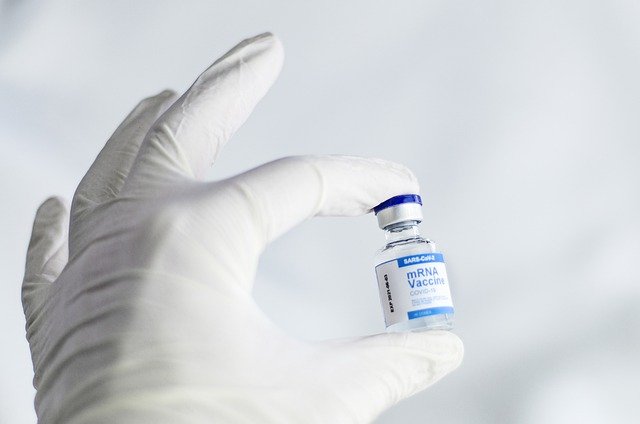Covid-19 Vaccines or Natural Immunity – Do Both Protect?
Covid-19 Vaccines or Natural Immunity – Do Both Protect?
September 10, 2021
In the current circumstances of disturbingly high rates of infection by the Delta variant and the concerns over obtaining effective vaccine coverage, the degree of protection provided to SARS-CoV-2 infected convalescent people is of clear relevance for natural immunity. Pei et al. estimate that 30% of the population in the United States have already been infected(1). Potency and durability of protection are the two critical considerations. What is the relative potency and duration of protection provided by previous infection compared with that provided by vaccination? Are there differences in the mechanisms of protection? Would vaccination of those previously infected boost protective immunity? Additionally, not all vaccines may be equally effective, and protection in convalescent patients may depend upon the type of predominantly circulating variants at the time of infection.
 Risk of Infection
Risk of Infection
A direct approach to these questions is to analyze infection, hospitalization, and death rates in the relevant cohorts. One caveat regarding this approach is that asymptomatic infections are likely to be undercounted. Previously, it was shown that the efficacy of the Pfizer vaccine was 88.0% in Israel. A recent very large retrospective study from Israel has compared infection rates in vaccinees with reinfection rates in previously infected people(2). The data analyzed was obtained prior to Feb 28 2021. People who were vaccinated with two doses of the Pfizer vaccine had a 13-fold elevated risk of infection with the Delta variant compared to people previously infected; and a 27-fold risk for symptomatic infection when the times of infection were matched. When the times of infection over the entire course of the study were unmatched, the relative risks were 6-fold for infection and 7-fold for symptomatic infection. This suggests that a natural infection with SARS-CoV-2 provides superior protection. However, the risks of infection are obviously far greater than the risks of vaccination, and durability of protection provided by this natural immunity is uncertain at this time. (It could be durable for at least months).
Interestingly, among those who had both been infected and received a single dose of the Pfizer vaccine, there was an approximate two-fold of reduced risk of infection compared to those who had been infected but not vaccinated.
The Spike protein IgG antibodies persist for up to eight months after infection, and they correlate with virus neutralization(5-7). Importantly, memory B cells, which are readily reactivated upon re-exposure to S protein, became numerous at six months(6).
It is important to take one dose of the Pfizer or the Moderna vaccine to boost protective immunity in convalescent individuals. Notably, infection with SARS-CoV-2 cannot be an alternative measure for protection and importantly, vaccination saves people’s lives.
Correlates of Protection
An alternative approach to these questions is simply to quantify correlates of protection. Neutralizing antibody levels correlate well with protection, but there may be additional correlates that are not well recognized. Certainly, currently available vaccines elicit antibodies and T cell activity against the spike protein alone. However, natural infection with SARS-CoV-2 could elicit similar activity against numerous other viral proteins, which could have provided enhanced protective effects. On the other hand, this natural infection leads to immune irregularities that may mitigate against protection. Currently, T cell correlates of protection are not well established or defined.
 Neutralizing Antibodies
Neutralizing Antibodies
What do neutralizing antibody levels suggest about protection from vaccination versus that from infection? The Spike protein IgG antibodies persist for up to eight months after infection, and they correlate with virus neutralization(5-7). Importantly, memory B cells, which are readily reactivated upon re-exposure to S protein, became numerous at six months(6). Dupont et al.(8) showed that antibodies were persistent for up to ten months after infection with the virus and were able to cross-neutralize different variants. These data support the idea that infection confers reasonably durable protection.
Most COVID-19 vaccines specifically target the S protein as a protective antigen. How might this affect breadth, potency, and durability of neutralizing antibodies? Vaccination with the Moderna vaccine elicits binding to a greater variety of epitopes within the receptor binding domain (RBD) of the S protein, suggesting that protection against variants that differ in the RBD domain would be broader than those induced by infection(9). Similarly, Goel et al.(10) showed persistence of neutralizing antibodies for six months and the generation of memory B cells and antibody maturation following vaccination with both the Pfizer and Moderna vaccines. Cross-binding to variants was likewise higher in vaccinees than in people previously infected. The results of Gallais et al.(11) are congruent, except that antibody maturation and memory were shown to persist for up to thirteen months.
 T Cell Immunity
T Cell Immunity
The neutralizing antibody data thus suggest that two-dose vaccination should be at least equally protective as prior infection. What about the contribution of other non-S viral proteins to protective immunity? Since it is unclear how antibodies to non-envelope proteins would contribute to neutralization and hence protection, it may be worth considering T cell immunity. A variety of T cell activities against viral proteins, including the S protein, occur after infection, while vaccination induces T cell activities against only the S protein. In the absence of a clear idea of the role of T cells in the correlates of protection, we will restrict our focus to CD8+ T cells. Among people previously infected with SARS-CoV-2, the viral proteins most commonly recognized by memory CD8+ cells are the S, nucleocapsid (N), membrane (M) and ORF3A(6), as judged by recognition of overlapping peptides(6). These were present in 50% of subjects after six months of viral infection. Goel et al.(10) determined that CD8+ T cells against the S protein appeared in most vaccinees after the second dose of the Pfizer or Moderna vaccine, reaching a peak in three months but declining steadily thereafter. The difficulty in interpreting these studies is that correlation of protection with specific T cell reactivities is quite unclear. A confounding factor could be that SARS-CoV-2 seems to polarize the immune response toward an inflammatory response, especially in severe cases. This could result in widely different results depending upon the particular blood samples being analyzed.
Conclusion
As can be seen from the above, protection from infection, hospitalization, and death seem to track reasonably well with neutralizing antibody data. Data from T cell measurements do not permit conclusions. It appears that infection, at least in mild to moderate cases, provides immunity from Covid-19 that at least approximates that from vaccination. However, duration and levels of protective immunity can vary depending on the individual. It is important to take one dose of the Pfizer or the Moderna vaccine to boost protective immunity in convalescent individuals. Notably, infection with SARS-CoV-2 cannot be an alternative measure for protection and importantly, vaccination saves people’s lives. Currently available mRNA vaccines can provide protection from severe disease, hospitalization and mortality against the highly contagious Delta variant.
